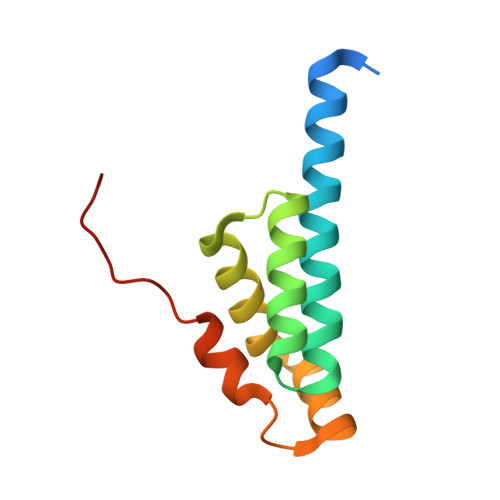Binding of Emsy to Hp1Beta: Implications for Recruitment of Hp1Beta and Bs69.
Ekblad, C.M., Chavali, G.B., Basu, B.P., Freund, S.M., Veprintsev, D., Hughes-Davies, L., Kouzarides, T., Doherty, A.J., Itzhaki, L.S.(2005) EMBO Rep 6: 675
- PubMed: 15947784
- DOI: https://doi.org/10.1038/sj.embor.7400415
- Primary Citation of Related Structures:
1UTU - PubMed Abstract:
EMSY is a large nuclear protein that binds to the transactivation domain of BRCA2. EMSY contains an approximately 100-residue segment at the amino terminus called the ENT (EMSY N-terminal) domain. Plant proteins containing ENT domains also contain members of the royal family of chromatin-remodelling domains. It has been proposed that EMSY may have a role in chromatin-related processes. This is supported by the observation that a number of chromatin-regulator proteins, including HP1beta and BS69, bind directly to EMSY by means of a conserved motif adjacent to the ENT domain. Here, we report the crystal structure of residues 1-108 of EMSY at 2.0 A resolution. The structure contains both the ENT domain and the HP1beta/BS69-binding motif. This binding motif forms an extended peptide-like conformation that adopts distinct orientations in each subunit of the dimer. Biophysical and nuclear magnetic resonance analyses show that the main complex formed by EMSY and the chromoshadow domain of HP1 (HP1-CSD) consists of one EMSY dimer sandwiched between two HP1-CSD dimers. The HP1beta-binding motif is necessary and sufficient for EMSY to bind to the chromoshadow domain of HP1beta.
- MRC Cancer Cell Unit, Hutchison/MRC Research Centre, Hills Road, Cambridge CB2 2XZ, UK.
Organizational Affiliation:
















